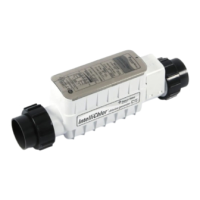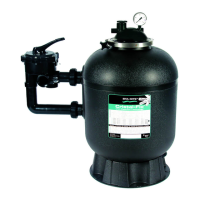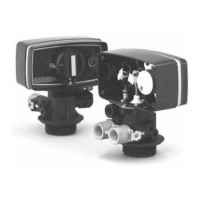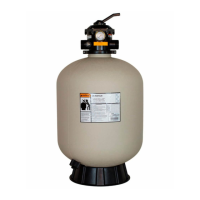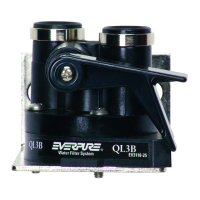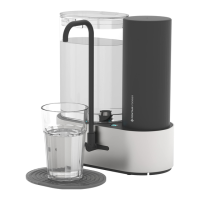10
English
Opmum Pool Water Chemistry Condions for Salt Water Pools
(using the iCHLOR Salt Chlorinator)
In accordance with the Associaon of Pool and Spa Professionals (APSP) standards, it is recommended that the following
pool water chemistry condions be maintained on an on going basis to help protect pool users, pool related equipment
and surfaces in and around the pool. These values are important to maintaining the pool equipment in proper operang
condion and prevenng corrosion, liming or other problems. The iCHLOR Salt Chlorinator is warranted to operate properly
only if these condions are met. For more informaon, refer to your local agency having jurisdicon, NSPI (Naonal Spa and
Pool Instute), the CDC (Centers for Disease Control), or the WHO (World Health Organizaon).
Free Chlorine: 2.0 - 4.0 ppm. Above 4.0 ppm may cause corrosion of metal components
Combined Chlorine (Chloramines): None (super chlorinate to remove all chloramines)
pH: 7.2 - 7.8 (USE MURIATIC ACID to lower pH and Soda Ash to raise pH.)
Cyanuric Acid: 30 - 50 ppm
Total Alkalinity: 80 - 120 ppm
Calcium Hardness: 200 - 400 ppm
TDS (includes salt): 3000 minimum to 5700 to 6000 maximum ppm
Salt: 3000 - 4500 ppm (ideal 3400 ppm)
Metals (Copper, Iron, Manganese): None
Nitrates: None
Phosphates: Less than 125 ppb
Saturaon Index -0.3 to 0.3 (zero (0) best)
Covered Pools and Vinyl Liner Pool and Lowering Chlorine Output Levels
When using the iCHLOR Salt Chlorinator with covered pools and/or vinyl liner pools, less chlorine is needed. It is recommend
to lower the chlorine output level while the pool is covered.
Chlorine Tesng
It is recommended that chlorine test samples be taken from two (2) locaons in the pool. Compare the samples. A higher level
should be found at the pool return line. The higher level at the pool return line indicates the iCHLOR is producing chlorine.
Take chlorine samples for tesng at:
• The pool return line.
• 450mm below the surface and well away from the pool return line.
What Type of Salt to Use
The purer the salt, the beer the life and performance of the iCHLOR Salt Chlorinator. Use salt that is at least 99.8% pure
NaCl, sodium chloride. The preferred and recommended salt is an evaporated, granulated, food quality, non-iodized salt with
no addives. Consult your pool professional/salt supplier.
• Avoid using salt with an-caking agents (sodium ferrocyanide, also known as YPS or yellow prussiate of soda). Filling
agents can cause some discoloraon of ngs and surface nishes in pool.
• Water condioning salt pellets are compressed forms of evaporated salt and may be used, but will take longer to dissolve.
Such pellets could damage pool plaster and other surfaces in and around the pool.
• Do not use calcium chloride or potassium chloride as a source of salt. (Use sodium chloride only).
• Do not use Rock salt (insoluble impuries mixed with the rock salt can shorten the life of the iCHLOR).

